Current News
/ArcaMax

Michigan mayor says federal immigration authorities are 'terrorizing' people
DETROIT — Sterling Heights Mayor Michael C. Taylor blasted President Donald Trump's national deportation efforts Tuesday, saying, during a city council meeting, that federal authorities had been "terrorizing" peaceful communities and Trump's political opponents.
Taylor, a former Republican who is now a political independent, gave a fiery, 22-...Read more

Somali American U.S. citizen arrested by immigration agents, detained for two days
MINNEAPOLIS — A U.S.-born Somali American woman said she was forcibly arrested and detained by immigration officials for two days amid the Trump administration’s crackdown in Minnesota.
With bandages still covering scrapes on her forehead, Nasra Ahmed, 23, spoke about her arrest at a news conference at the Minnesota Capitol on Wednesday. ...Read more

Preschooler and three other students detained by ICE, school district leader says
A 5-year-old preschool student was taken with his father by federal immigration agents shortly after arriving home from school, Columbia Heights school leaders said Jan. 21 — the first time a Twin Cities school district has publicly confirmed a student being detained by ICE since Operation Metro Surge began.
His detention, school leaders say,...Read more
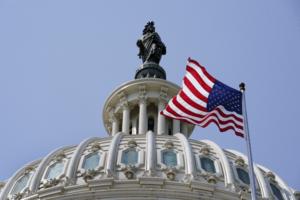
Crypto bill delayed as Senate panel pivots to housing push
A sweeping U.S. crypto market bill is likely to be delayed by at least several weeks as key lawmakers shift their focus to potential housing legislation in support of President Donald Trump’s affordability push, according to people familiar with the matter.
The move by the Senate Banking Committee follows Trump administration calls to tackle...Read more
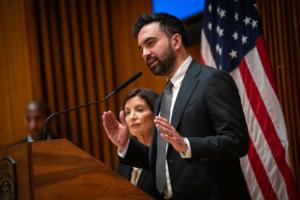
Mamdani signals he's ready to push Gov. Hochul on tax hikes as NYC budget shortfall looms
Facing a potential $12 billion budget gap and a need to make good on promises of an ambitious, but pricey, affordability agenda, New York City Mayor Zohran Mamdani indicated Wednesday he may push Governor Kathy Hochul in budget negotiations to include tax hikes on millionaires and corporations.
That effort could set up a conflict between the ...Read more

Democratic senator assails 'secret' ICE policy to enter homes
WASHINGTON — U.S. Senator Richard Blumenthal, D-Conn., is demanding answers from the Department of Homeland Security after whistleblowers disclosed a new policy that would let immigration agents forcibly enter homes without a judge’s warrant to carry out arrests.
In a letter to Homeland Security Secretary Kristi Noem, Blumenthal said an “...Read more
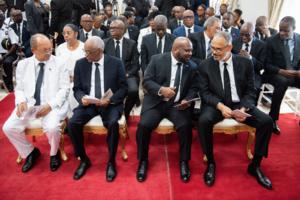
UN to Haiti's political leaders: 'Time for political maneuvering is over'
As Haiti approaches the end of another political transition without elections or a clear governing framework, the United Nations and other international partners are warning that political self-interest and infighting could further unravel an already fragile country,
The warning comes as the nine-member Transitional Presidential Council appears...Read more

Washington state considers ending interest on medical debt
OLYMPIA, Wash. — As lawmakers pursue bills to zero in on affordability issues gripping households across the state, a Democratic measure in the Legislature seeks to curb the financial strain of medical expenses by proposing to eliminate interest charges on new and unpaid medical debt incurred in Washington.
Senate Bill 5993, sponsored by ...Read more

Minnesota resident, US citizen detained for accent
MINNEAPOLIS — Ramon Menera, a Columbia Heights resident and U.S. citizen, said he was detained by U.S. Customs and Border Patrol agents Jan. 14 after an agent told him his accent led officers to question where he was born, adding to a growing list of encounters that have been dubbed “Kavanaugh stops.”
Menera said in an interview with the...Read more
New ad in Michigan race for governor questions James' loyalty to Trump
LANSING, Mich. — A nonprofit organization that formed in December has launched an ad blitz in recent days attacking U.S. Rep. John James and possibly signaling a new candidate could be waiting in the wings to enter the race to be Michigan's next governor.
James, a two-term member of the U.S. House from Shelby Township, is viewed by many as ...Read more

Judge removes Las Vegas Review-Journal staff from courtroom
LAS VEGAS — A judge removed Las Vegas Review-Journal staff from her courtroom Wednesday because they refused to promise not to name an alleged victim testifying in the Nathan Chasing Horse sexual assault trial.
An attorney for the Review-Journal plans to appeal District Judge Jessica Peterson’s ruling.
Glenn Cook, executive editor of the ...Read more

FCC takes aim at talk shows in fight over 'equal time' rules for politicians
The Federal Communications Commission is taking aim at broadcast networks' late-night and daytime talk shows, including ABC's "The View," which often feature politicians as guests.
On Wednesday, the FCC's Media Bureau issued a public notice saying broadcast TV stations would be obligated to provide equal time to an opposing political candidate...Read more

Lawmakers try to lower age for concealed carry of guns in Kentucky
LEXINGTON, Ky. — Kentuckians could carry concealed firearms at age 18 instead of 21 under a bill headed to the House floor.
House Bill 312, approved Wednesday by the House Judiciary Committee, would lower the age at which someone could apply to the Kentucky State Police for a newly created “provisional” concealed carry license.
Kentucky ...Read more

With new bill, GOP lawmaker is emphatic: Idaho public lands are not for sale
Idaho state Sen. Ben Adams took an “unconventional” approach with his proposal to preserve public lands, he told fellow lawmakers.
In August, months before the 2026 legislative session, Adams publicly proposed to amend the state’s constitution to prevent Idaho from selling off lands it acquired from the federal government. The Nampa ...Read more
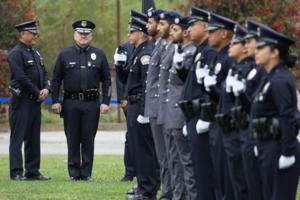
Council approves boost in LAPD hiring, despite budget concerns
LOS ANGELES — For eight months, the Los Angeles City Council and Mayor Karen Bass have butted heads over police hiring amid a budget crisis.
The conflict began last spring when the council voted to reduce LAPD hiring to 240 new police officers this budget year — just half the officers Bass had requested — in order to close the city’s $1...Read more
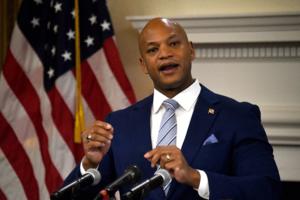
Maryland Gov. Moore's $71 billion budget eliminates the deficit, but could shift financial burden to local jurisdictions
BALTIMORE — Gov. Wes Moore released a $70.8 billion budget proposal on Wednesday for fiscal year 2027 that makes nearly $1.8 billion in program cuts and fund transfers to eliminate a projected $1.4 billion shortfall, in part by reducing cost-sharing with local governments.
The Maryland governor told reporters that the plan, which represents a...Read more

Trump backs off Greenland tariffs, citing 'framework' deal
President Donald Trump said he would refrain from imposing tariffs on goods from European nations opposing his effort to take possession of Greenland, citing a “framework of a future deal” he said was reached regarding the island.
The decision, which Trump announced Wednesday on social media, marks a stark reversal for a president who has ...Read more
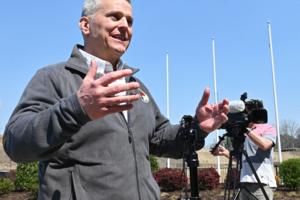
Gov. Stein declares state of emergency before winter storm descends on NC
CHARLOTTE, N.C. — North Carolina Gov. Josh Stein issued a state of emergency Wednesday in advance of a winter storm forecast to wallop the state and much of the country over the weekend.
The state of emergency allows the governor’s office to initiate emergency plans, deploy emergency response teams and trigger protections against price ...Read more

Immigration agent shoots at suspect during operation in South LA
LOS ANGELES — A federal immigration agent shot at a suspect during a targeted operation in South L.A. on Wednesday morning, drawing a crowd of protesters to the shut-down street and intensifying safety concerns in the immigrant-heavy community.
A federal agent opened fire at a man after he rammed federal law enforcement with his vehicle while...Read more

Orlando police car runs stoplight, kills 'dancing' grandma
ORLANDO, Fla. — A 92-year-old “dancing” grandma, whose verve often kept her out late on Saturday nights, had her life cut short in an early morning weekend crash caused by an Orlando police officer who drove through a red light.
A preliminary accident report, prepared by Orlando Police and provided by the family, said the “at fault” ...Read more
Popular Stories
- Speed-zone cameras outside Miami-Dade schools are generating over $2 million a month
- Trump claims to have struck Greenland deal after bellicose Davos speech
- Trump backs off Greenland tariffs, citing 'framework' deal
- Gov. Stein declares state of emergency before winter storm descends on NC
- Michigan mayor says federal immigration authorities are 'terrorizing' people





